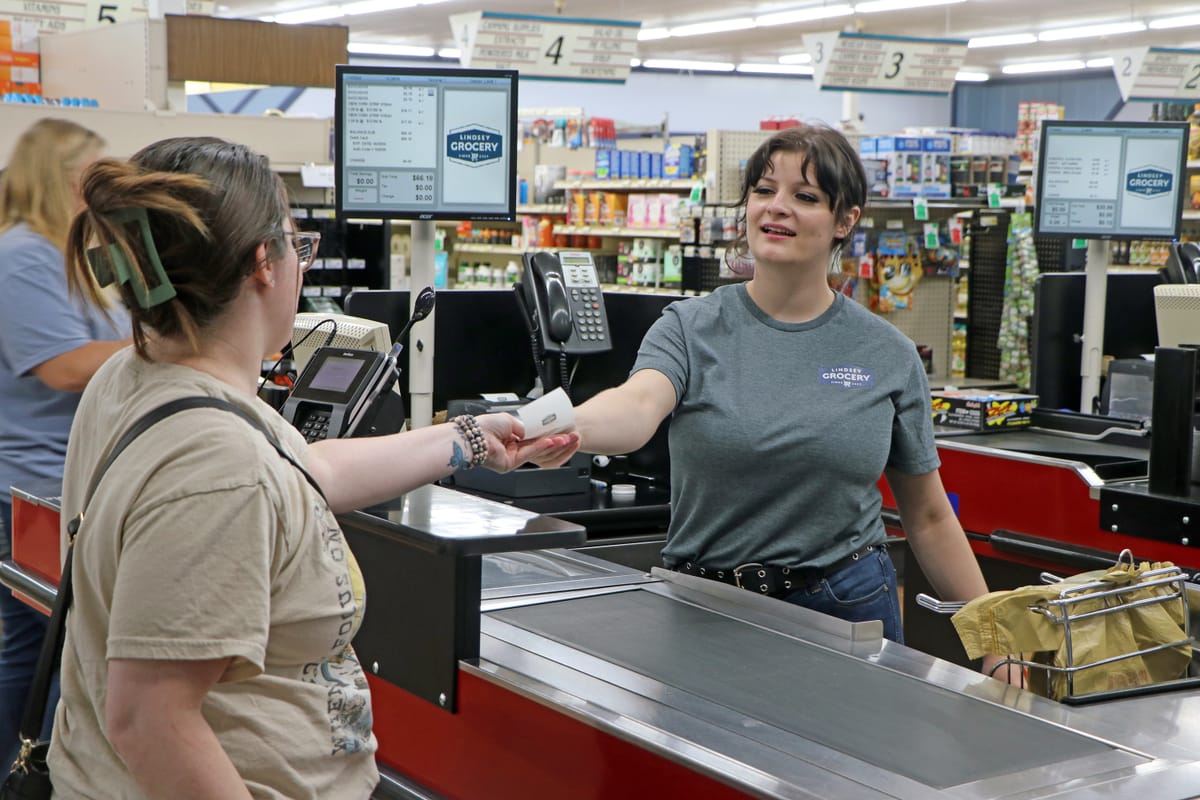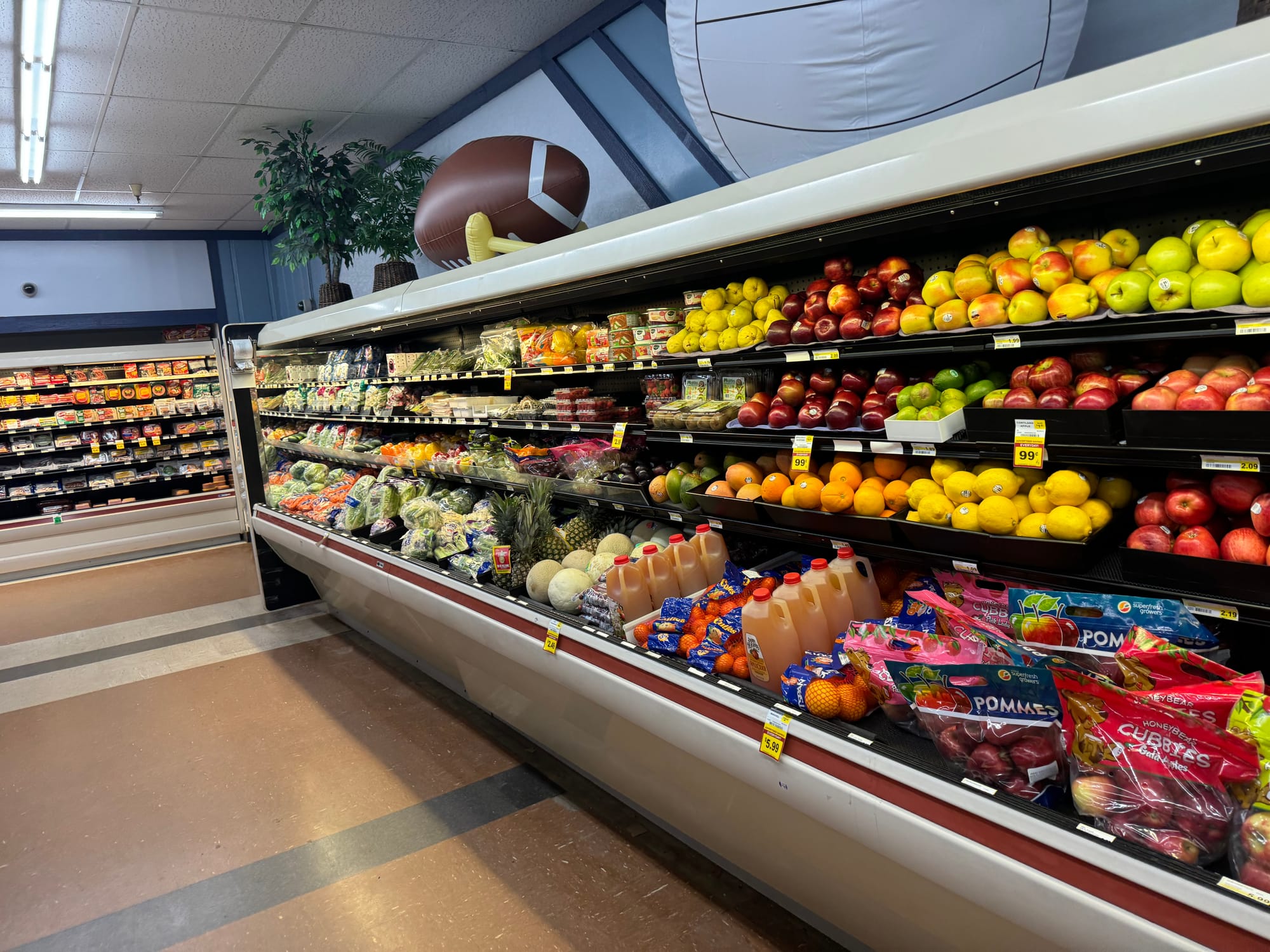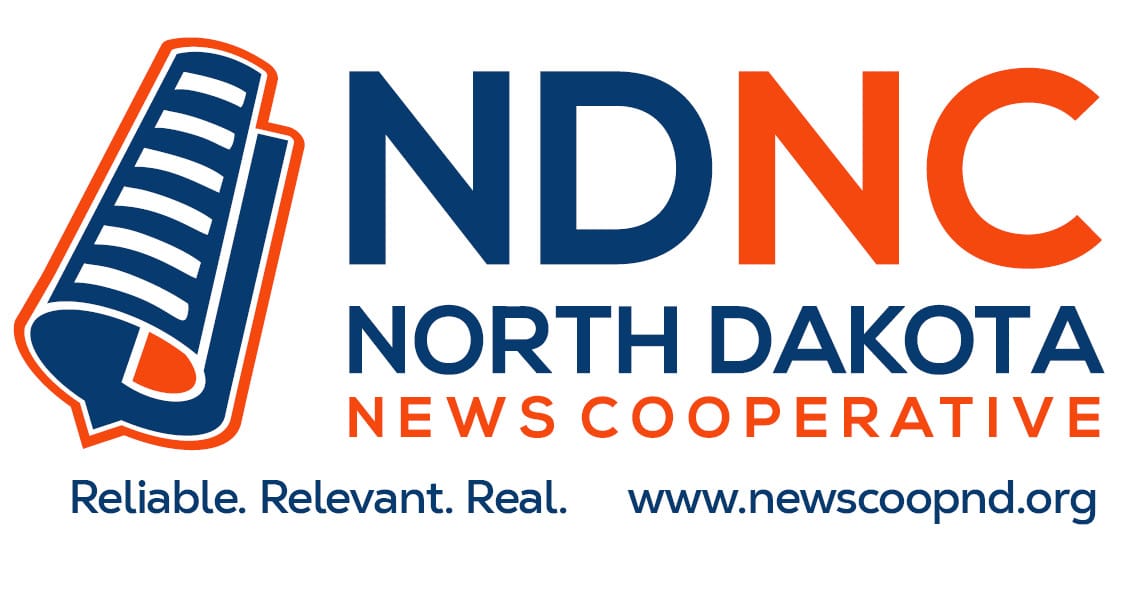Rural grocery stores challenged by prices, distribution costs
Communities statewide exploring range of options

The recent loss of Drake’s only grocery store has the rural community searching for solutions.
The closing of Drake Fresh Foods came with just three weeks' notice, leaving the town’s 280 residents without convenient access to fresh produce and staples like milk, eggs and bread.
Grocery stores in Harvey, about 25 minutes away, and Velva, around 30 minutes, are options for most, but harder for the homebound or elderly, said Fr. Thomas Graner, a pastor serving Catholic churches in McClusky, Anamoose and Drake.
Some, in their 80s and 90s, now don’t have many options. Winter conditions add more challenges.
“They might drive, but it is usually around town where everybody knows to look out for them. They don’t drive on the highway. They’ve got to wait for somebody who’s headed out of town, or have kids who are still around to bring groceries back for them,” Graner said.
“It’s a death in a community,” he said. “It’s like losing a school, or a church or a post office. Groceries are kind of a cornerstone. They provide a little employment, and everybody needs to eat.”
With those losses, property values decrease, activity drops and a community dwindles. Older residents either find ways around the inconvenient distances or move away.
These quiet deaths of community services are an increasingly common concern across the state, and communities are looking for answers. In some cases, it could mean bringing in a smaller grocery, or adding a grocery locker serviced by a larger grocery nearby that locals can access 24/7.
Seeking solutions
The North Dakota Association of Rural Electric Cooperatives (NDAREC) is following the plight of rural grocery stores with interest and actively working as a partner to find solutions.
The association, whose members are North Dakota’s electric cooperatives, was instrumental in helping several communities in northeastern North Dakota form a rural access distribution cooperative.
This includes a central hub grocery in Park River and a system of food lockers in nearby communities in Walsh County where grocery stores have disappeared, allowing people to order items online and pick them up at the lock boxes at their convenience.
Groups in other parts of the state, including Hazelton, have recently been studying the concept, according to Ellen Huber, rural development services director at NDAREC.
In other communities, it might be a town government or local job development authority (JDA) tackling the problem. In McClusky, a 45-minute drive south from Drake, the local JDA is in the process of taking over Holen’s SuperValu.
Beginning Jan. 1, 2025, the JDA will own and manage the store until a potential buyer is found. Current owners, Scott and Diane Holen, have been trying to sell the store for three years and will soon retire after running it the past 15 years.
In those years, Diane said she’s seen prices increase, as her store tries to compete with bigger operations in larger towns.
“Everybody complains about prices in a small grocery store, which is out of our control,” Holen said.
Since the SuperValu chain recently closed its Bismarck distribution center, all products are now sourced from further away, coming from Fargo, Minneapolis and as far away as Illinois.
Holen said that hasn’t had an impact yet, but could in winter road conditions.
“Schools and groceries, those two things are so pivotal for whether a community can sustain itself and grow, or whether it's going backward,” Huber said. “When they lose one or the other, or both, then that's really tough for communities to sustain.”
Further north and west, several communities were disrupted this past year after Jason’s Super Foods stores in Bottineau, Westhope, Mohall, Crosby and Lignite closed or were sold off, following a personal issue with the chain’s owner.
In Crosby, the closing meant four months without a grocery store offering fresh produce from March through mid-July this year.
While there’s a Dollar General and a bulk goods store in town, the grocery closure meant many residents had to drive to Tioga, Williston or other stores more than 60 miles away for most of their fresh produce, said KayCee Lindsey of the Divide County JDA.
Lindsey and her husband, Devin, who managed the store before it closed, stepped into the void to purchase the grocery, which they’ve rebranded Lindsey Grocery.

“Losing that core business can really create a domino effect,” KayCee said. “It’s like losing a hospital or one of the core things you need for a community to be functional.”
Not having a grocery impacts other businesses as well. If someone is heading out of town, that person may end up doing all of their other shopping on that out-of-town run.
“It was pulling people out of town,” KayCee said. “So, they were getting their pharmacy things out of town, getting their lumber and other items out of town.”
Huber sees the challenges as driven by costs and availability of goods and services.
“Community members are making their big trip to Minot or Bismarck, or larger metro areas closest to them, and they're hitting the Sam's Clubs or the Costcos, and maybe buying a month's worth of certain types of products, and then they're relying on the other local grocery store for the more perishable products,” Huber said.
That’s tough for local grocery stores, she said. They can’t get enough volume, and distribution in rural and remote areas means prices can be higher.
Pressures add up. Huber said some rural stores are seeing around $1,000 in extra fees and charges per week from distributors, according to one study still being conducted.
When profit margins are so thin, it can be more difficult for stores to reinvest in things like updating old cooler and freezer systems and other equipment.
KayCee said one of the bigger challenges is competing against corporate chains in larger communities, since their pricing models are different. Dealing with distribution networks that may not want to come to your area is another disadvantage.
Lindsey Grocery also uses the SuperValu distribution network, and could potentially be disrupted by the closing of the Bismarck warehouse.
“That puts a little bit more pressure on being able to make sure that you get your orders in even earlier and know what to project your needs are the next week, when you have to place your order early in the week before,” Lindsey said. “It gets to be a little challenging.”
Available funding
The Lindsey family was able to utilize a low-interest loan from the Rural Development Finance Corporation (RDFC) to get the store up and running again. Besides RDFC loans, the state has a Rural Food Sustainability Grant Program that could be available again next year if reauthorized during the 2025 legislative session.
The Rural Food Sustainability Grant allocation for the 2023-2025 biennium, through the N.D. Department of Commerce, totaled $1 million. The grant program was piloted using the research and work of NDAREC in the rural grocery space.
That bipartisan legislation was co-sponsored by state Sen. Janne Myrdal, a Republican from Edinburg and, Rep. Karla Rose Hanson, a district 44 Democrat from Fargo.
Myrdal was unsure whether there would be an expansion on that in the coming legislative session, but said nothing was currently planned.
“It’s working well in my district, so I will certainly support any efforts going forward, as long as it's a grassroots effort and that the local communities have skin in the game,” Myrdal said, referring to the hub grocery in Park River food locker system piloted there.

Myrdal said she lives around 80 miles from the nearest Walmart, which isn’t a big deal for her, she said, but could be for others if there aren’t closer options.
“If you're elderly and you live 35 or 45 miles away from the closest grocery store in the winter in North Dakota, you're in some trouble,” Myrdal said.
Federal funding is also available.
Most recently, four grocery stores have tapped into U.S. Department of Agriculture (USDA) Rural Energy for America Program (REAP) grants, with Bronson’s SuperValu in Beulah, Harvey Warehouse Grocery, NDGS in Watford City and Krause’s in Garrison using the funds for purchasing more energy-efficient refrigeration equipment, lighting and HVAC systems, according to USDA.
Graner in Drake has started working with locals to bring their grocery store back. So far they have created a nonprofit group and explored the potential for using a REAP grant or other loan programs.
“We want to make it affordable and appealing to our older residents, those who don’t travel,” Graner said.
The group has found a city-owned building they think will work and are looking at possibilities to allow access to the store after hours. Graner mentioned a community-owned grocery in Munich, where residents can enter with an app or a key fob during off hours.
Several other federal programs also provide funding possibilities, including the Healthy Food Financing Initiative Food Access and Retail Expansion, with potential provisions of up to $250,000; USDA Rural Economic Development Loan and Grant Program for 0% interest loans; and “Business Builder” grants from the North Central Regional Food Business Center of up to $50,000 for strengthening local food systems and supply chains.
Supporting local food networks
NDAREC is also working with communities near Minot on what Huber calls a “big hairy audacious goal.”
The idea is to establish a regional hub market network that includes a warehouse with traditional groceries supplying that market. This would be supplemented by locally procured food products. Both the traditional items and the local foods could then be distributed to rural stores in the region through existing transportation networks for those goods.
The hope is schools, restaurants and health care facilities would tap into the regional hub market and distribution system to make it more viable. Besides local growers already serving farmers markets, other avenues exist for local meat producers and processors to distribute through the hub.
Once established, it could serve as a model for other regional hubs across the state.
“Minot Public Schools is really interested and it sounded like they’d be ready to go tomorrow if the hub was ready,” Huber said, adding there are at least six grocery stores in the Minot area already interested in a potential network.
The NDAREC Rural Development Center will host a reporting session with key stakeholders on the feasibility of a regional grocery warehouse and local food hub at 1 p.m. Nov. 20 at SRT Communications, 3615 N. Broadway, Minot.
The North Dakota News Cooperative is a nonprofit news organization providing reliable and independent reporting on issues and events that impact the lives of North Dakotans. The organization increases the public’s access to quality journalism and advances news literacy across the state. For more information about NDNC or to make a charitable contribution, please visit newscoopnd.org. Send comments, suggestions or tips to michael@newscoopnd.org. Follow us on Twitter: https://twitter.com/NDNewsCoop.




